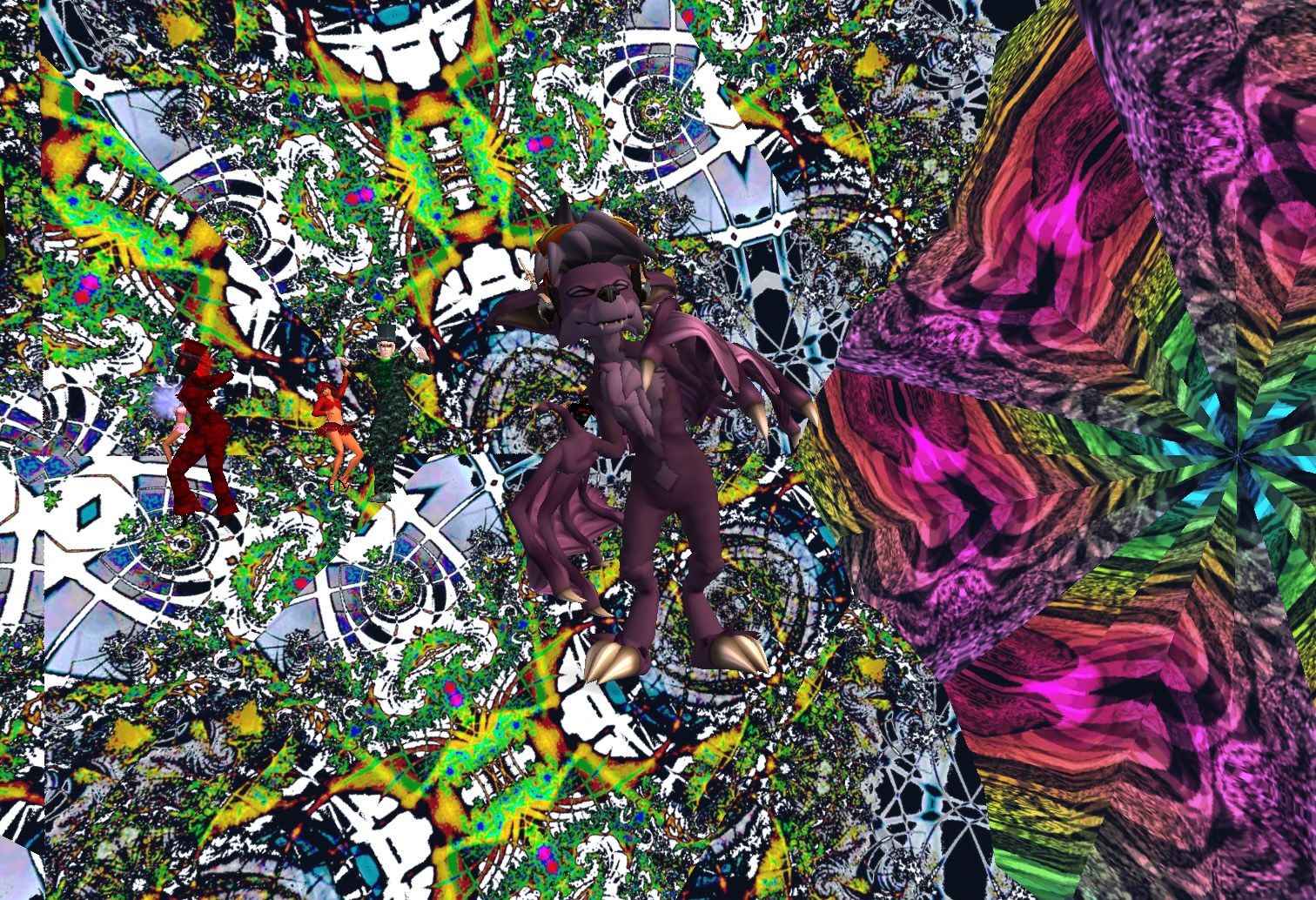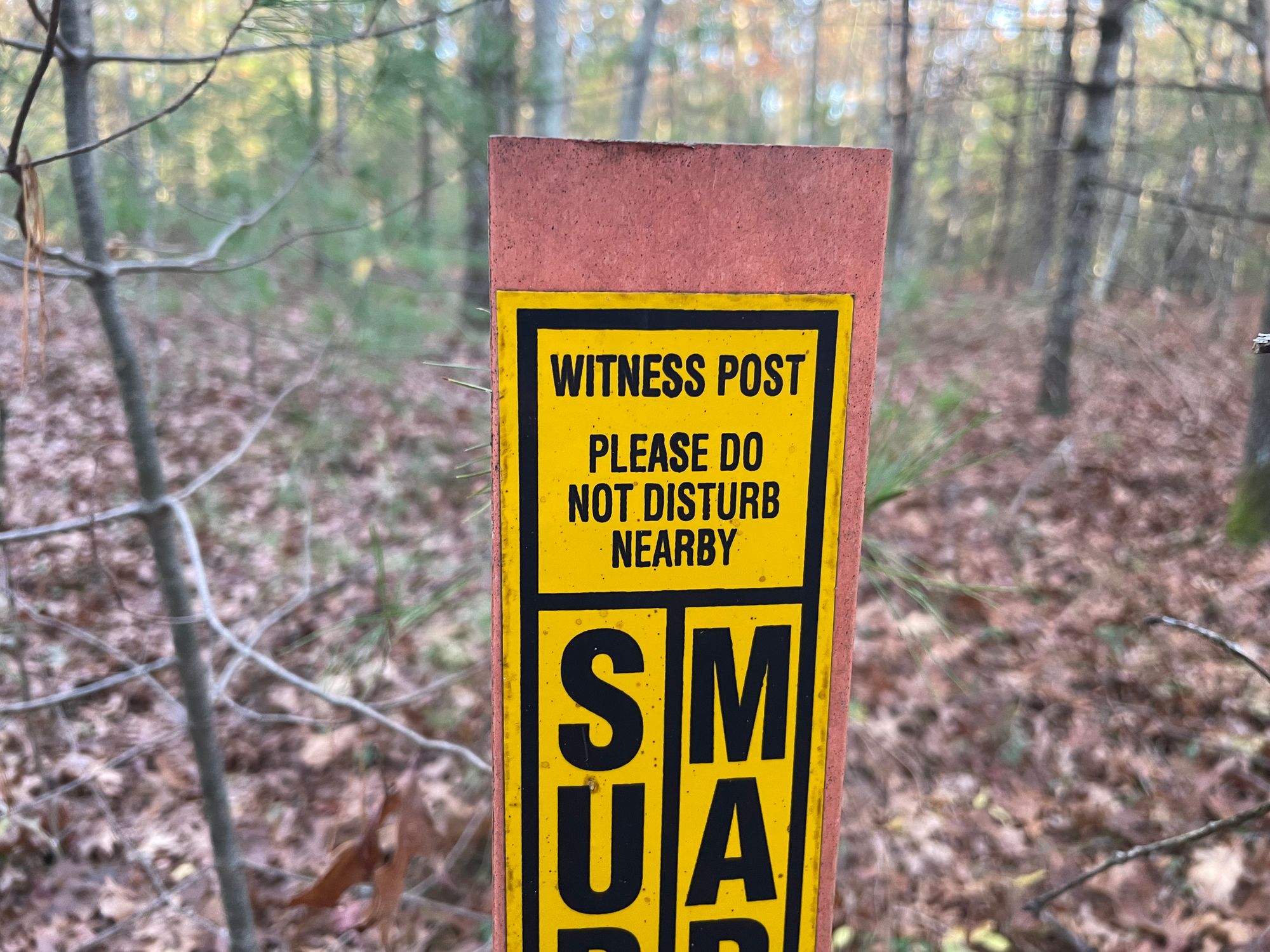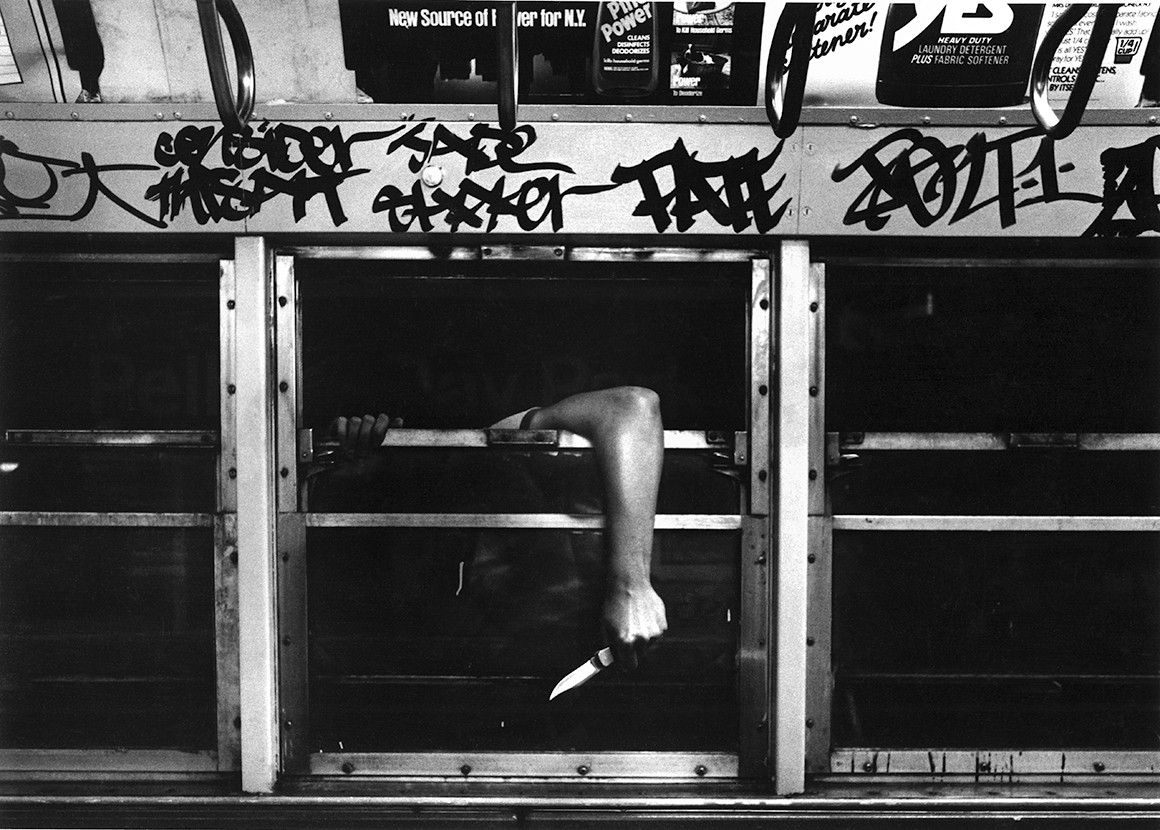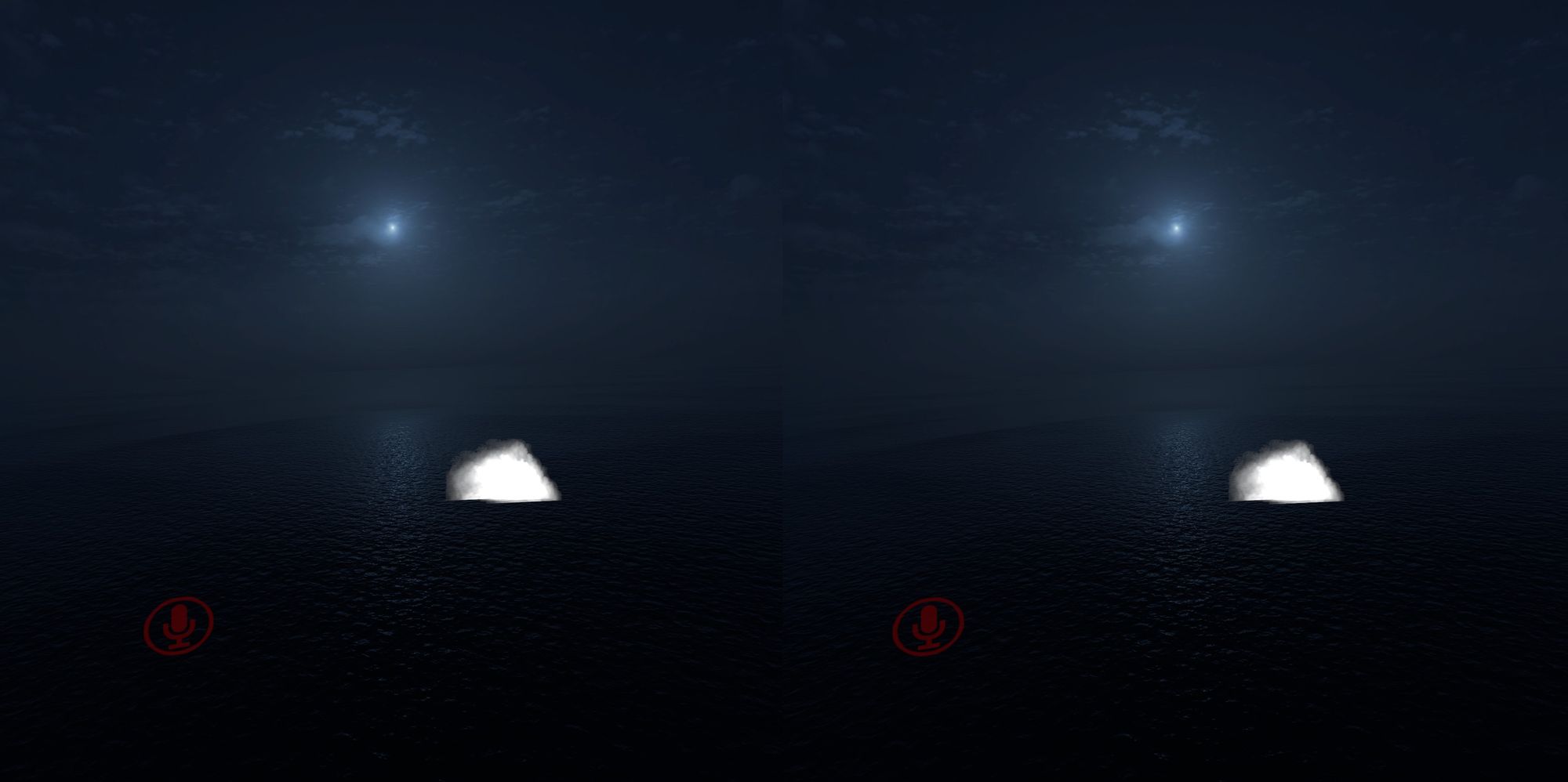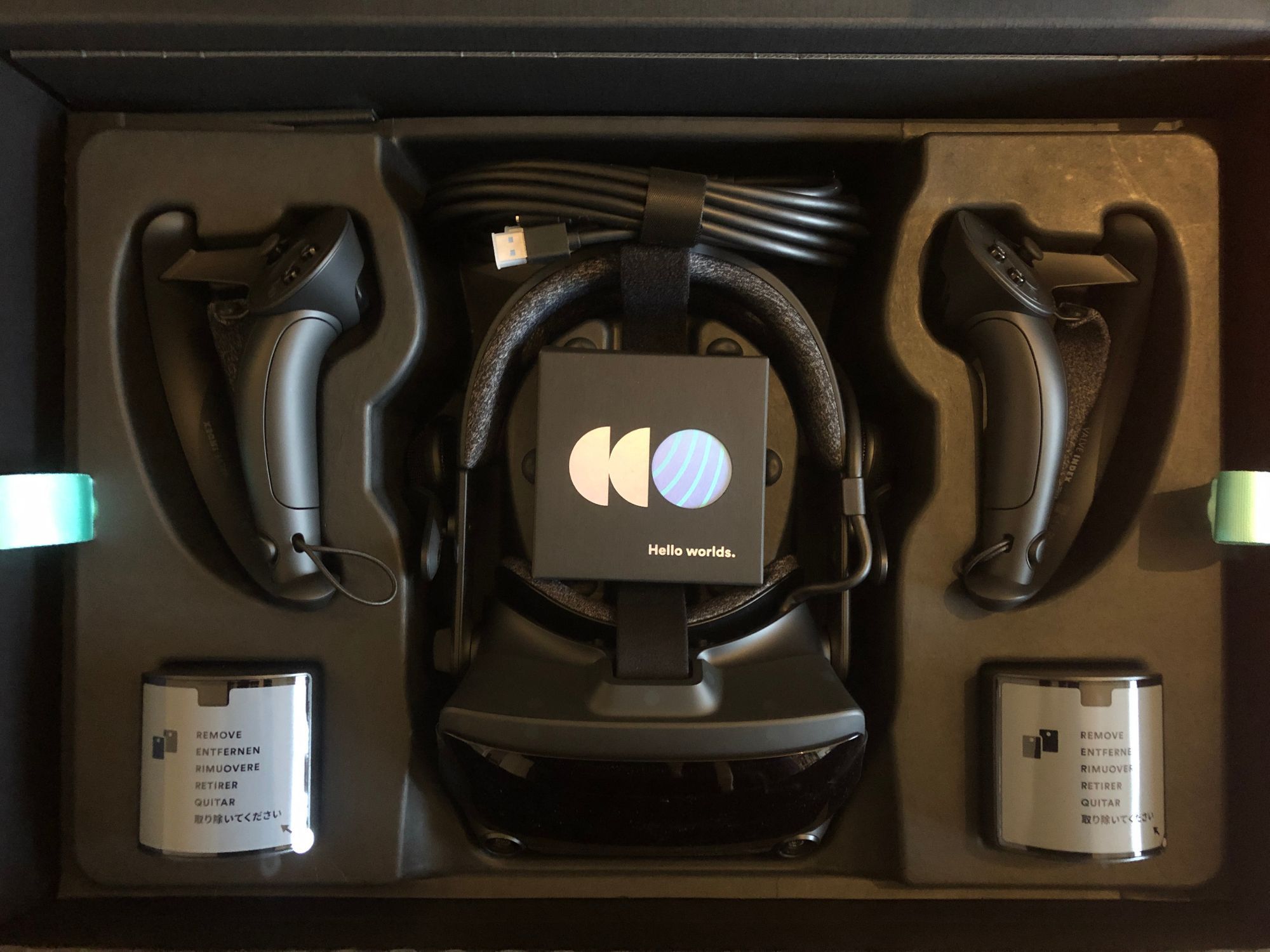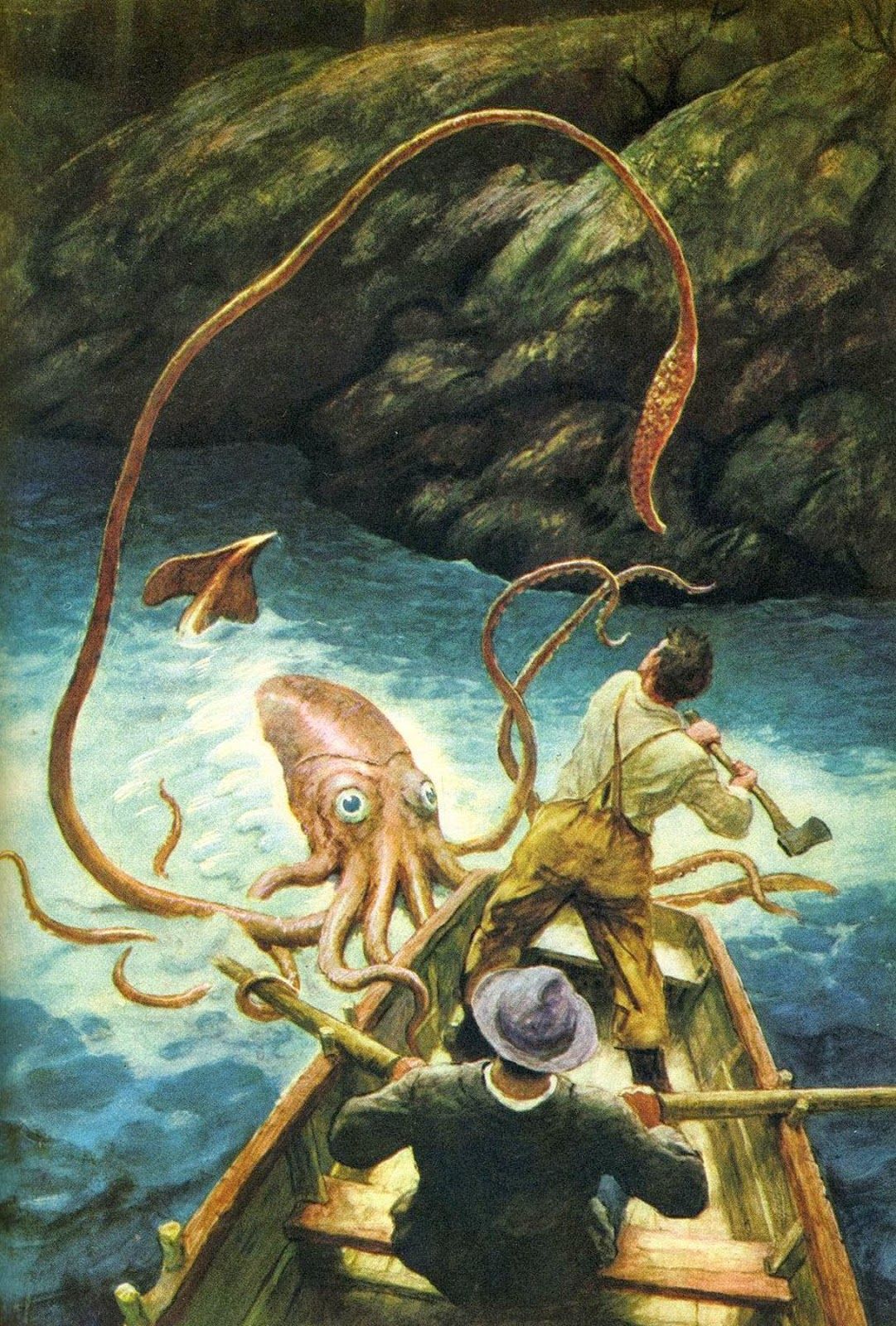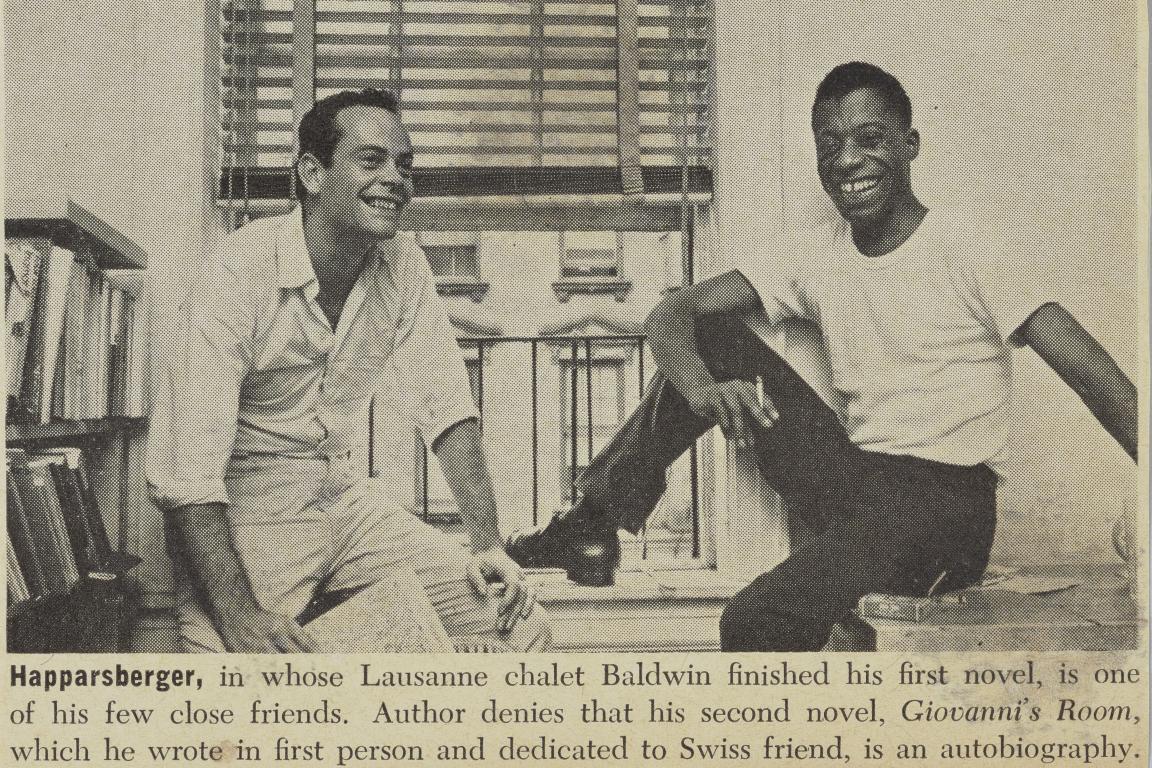
The Side Effects of Mercury Poisoning Include Memory Loss
Part 1: Forgetting requires ownership
A version of part of this essay was first delivered as a performance lecture in Helsinki in 2018, at the Birthday / Conference of my friend Eleanor Saitta.
I. History
This is one of my favorite bits of computational history, it’s a form of delay-line memory also called mercury memory. It consists of a tube of liquid mercury with what is basically a speaker at one end and a microphone at the other. If you want to save some data, you convert it to a series of tones which are played over a speaker at one end of the tube.

The signal enters electrically so it’s moving at the speed of light, but converting it to a sound means that it slows down to about 343 Meter per second in air, and then pumping it through mercury means that the sound waves slow down to about 1,400 Meters/second, so in this way, with a tube about a meter and a half long, you can preserve a bit of encoded information for one second. By connecting the output of the tube to the input, you get a repeating loop, and you can keep the data on standby for as long as you like.

I have always loved this for the sheer simple beauty of the engineering but also for the inescapable metaphor: information looping in shiny, highly-toxic fluid metal.
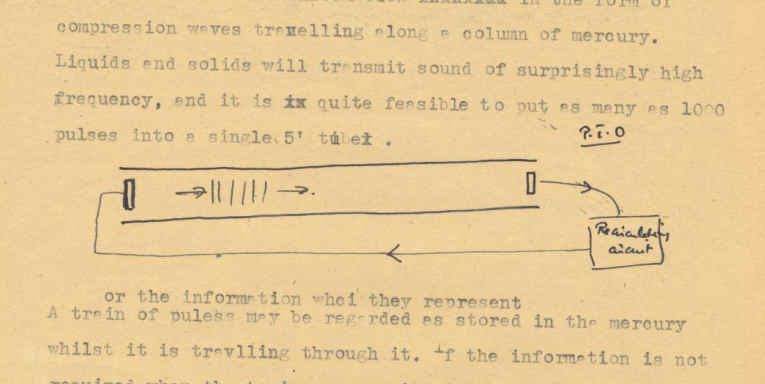
This is a sketch by Alan Turing of the delay line memory for the Pilot ACE computer he built in 1950. Two years later (on account of being queer) he was forced to swallow poison by his government, in a bid to erase the gross indecency of himself. Two years after that he erased himself by swallowing cyanide. It may have been an accident. It may have been a performance.
The side effects of mercury poisoning include memory loss.
THE TWITTER MACHINE
A machine for collective remembering.
1935 London, the Notificator.
Pay two pennies and scrawl a message onto a slip of paper that says behind glass in a slot for a few hours. Presumably somewhere there is a spool of paper with these thoughts unstuck from time.
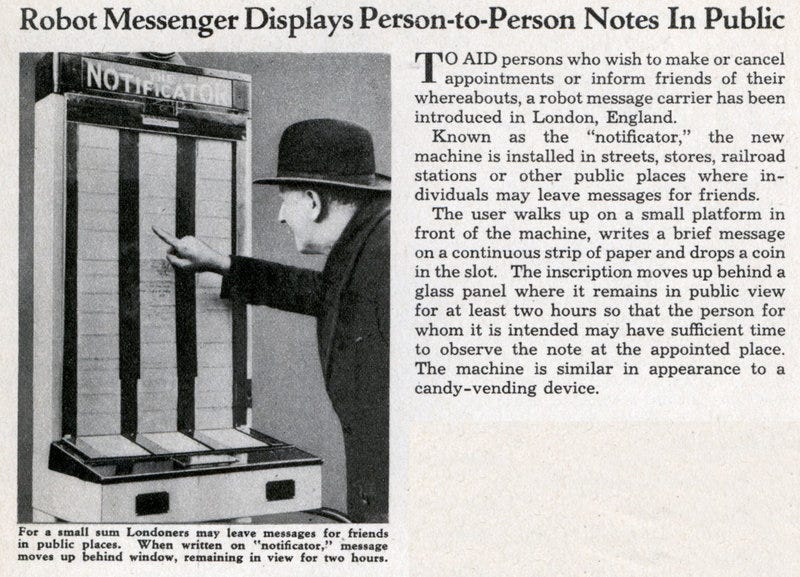
THE GREATER NEW YORK MEMORY CONTAINER
In 2009, two years into my own experiment of living daily with Twitter, my art partner Mary Lucking and I were brainstorming projects for the Provflux Psychogeography conference which was going to be held in New York. The time and the technology seemed right for psychogeographic explorations, for uncovering hidden things. I was obsessed with Mercury memory and alternate timelines, and Mary had been working with a fabricator. We decided to combine the ideas and create a repository of memory.
A growing unease with the network even now, but still it felt good to be in the future, we might build a time machine.
The proposal reads:
During the early days of subway travel, it was believed that prolonged journeys under the earth caused memory loss. As a public service, most underground train companies provided a means of recording important thoughts and ideas, so that the traveller could retrieve them upon return. Early examples include the Greater New York Memory Container (GNMC), which was installed in 1904 during the construction of City Hall station. This device was unfortunately removed in 1931 because of the value of the metal to the ongoing war effort, but originally consisted of 30,000 miles of memory enhanced alloy tubing curled tightly around the station in concentric rings. A mouthpiece near the ticket booth allowed riders to deposit their thoughts, and a listening post located at the top of the exit stairwell allowed for retrieval once the rider was safely above ground.
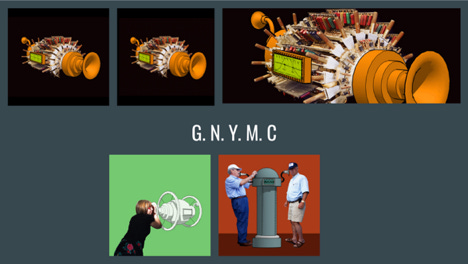
The piece was accepted but we were told that we needed to install it in an actual subway station, I was delighted until I understood that meant we needed to comply with NYC subway installation regulations, which include a requirement that all interactive surfaces be shatter proof, punch proof, knife proof, should hold their own against existential threat. None of my memories are that sturdy.
II. Random Access
Random access memory replaced mercury memory.
The story is more complicated than this of course, but fast random access memory is one of the fundamental ways in which we are capable of applying computation to our lives. The process of digitization, of transforming real life into something that can be computed, is largely about converting the uncomputable into the computable; Reducing and shaping and formatting life until it can be stored, retrieved, duplicated, distributed and modified. We unpack and repack the timeline to instrumentalize it, to weaponize it, to give it utility.
MoRM 1 : WHAT DO YOU WANT TO FORGET?
Spring of 2016: I was invited to participate in an unusual working group, called Creating Future Memories. A group of us, never having met before, landed in a corner of a library in Aarhus Denmark to discuss what it meant to archive memory.
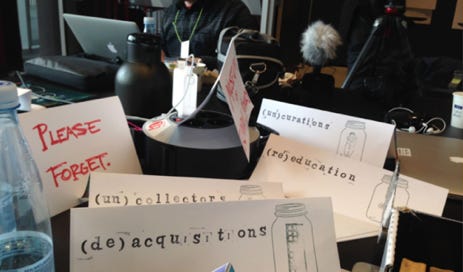
Over the course of 48 hours we designed and built a museum, the Museum of Random Memory, an experiment where we asked visitors to contribute something: an object, a story, an idea, that was useless. We received: gum wrappers, business cards, taxi receipts and also: memories of lost loves, job rejections.
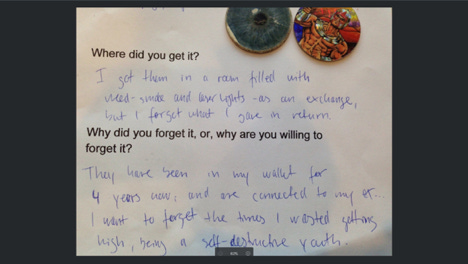
a.image2.image-link.image2-264-468 { padding-bottom: 56.41025641025641%; padding-bottom: min(56.41025641025641%, 264px); width: 100%; height: 0; } a.image2.image-link.image2-264-468 img { max-width: 468px; max-height: 264px; }
Two Pogs, toys from the late 90s, that a woman had been carrying with her from a former life. They’d belonged to her boyfriend, they’d both been on drugs, a lot of drugs, she got them in a room full of weed smoke and lasers as an exchange for something she couldn’t remember, she didn’t know why she still had them, she wanted to get rid of them.
Kasper Ostrowski, an artist who calls himself and empirical printer, opened our de-acquisition department, creating monoprints of the objects which destroyed them in a ritual of collective forgetting.
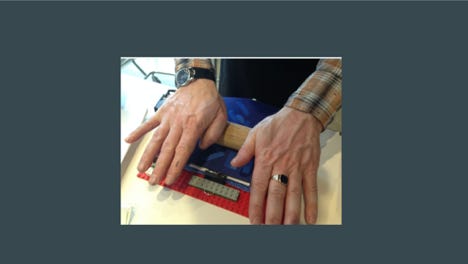
I wrote this:
The internet promises a permanent record, more data than we want, more details, more metadata. We record everything and sort it out later, because in fact recording is easier than forgetting. Recording can be done without identity, but forgetting requires ownership: I must single out a memory, an artifact or an idea and erase it, that very one and not the others, while the technology, as the myth will have it, is blind to meaning, simply collecting what it encounters without judgement, politics or care.
DEATH
This is a photo of me and my high school girlfriend, Kay Katy Hsieh. Katy and I had the kind of relationship which you only really have when you’re 16 and you’re not entirely sure where the edges of your own self are. I can’t articulate the specifics because looking back, 40 year old me sees the romance of 16 year old me with affection, but also embarrassment at how childish we were. There’s something else too, the specific reason that I want to re-write this narrative. There are other loves, other lives. There are timelines I don’t have photos of, threads that took me almost 20 years to find again. This photo is posed by an event photographer, the background artificial. My clothes were rented. I remember we almost didn’t take it, I don’t remember why. I also went to six proms (who goes to six proms?). Really. I want all that in the timeline, because it’s here in my own head, but I’m not even sure that makes sense, I’m not sure I have a right, and anyway it’s complicated.

Still, this is a thing that we do: we rewrite our memories, our histories, our bodies, and where we are now in our timeline is definitely not where were were then.
I have another photograph, it was taken with a 35mm point-and-shoot, which replaced my Kodak 110 camera, a kids camera, made by FischerPrice. That camera was my first, a gift from my grandparents I kept and used until the last Fotomat booth closed. But this particular photo, the one I’m thinking about, shows me, and Katy, and Rex Chao, in the El-Yunque rain forest in Puerto Rico. We were on a school trip, and I’m with Katy and behind us is Rex. I didn’t know Rex very well, he was nice enough but always seemed a bit stand-offish. At 16 I would say he was a snob, now I’d probably say he was an introvert, but he decided to attach himself to Katy and me on this one day, the way kids do sometimes when they travel in packs. It was a nice day, a beautiful day with exceptional light. I set up a timed photo of the three of us - I don’t remember talking about much but I remember distinctly when we got the photos back, Katy saying how odd it was that there was a scratch on the photo, across Rex’s face. Did you… do that? She asked. No not at all, it’s on the negative... it just happened… kind of weird.
Two years later, I couldn’t stop thinking about this exchange when Rex was murdered. He was the first person that I knew personally who was here and then - not. I remember being sad in a way I had no idea what to do with. We were not close, but we’d breathed the same air once. We walked through a forest in Puerto Rico together. Nobody remembers this. It’s not important.
Rex was shot in the head by a classmate in his freshman year at Johns Hopkins. Crossing the quad, a man, a boy, who was on the same conservative debate team, stepped out of the bushes with a gun and that was that. It’s implied that they might have been lovers. It might have been an accident. It might have been a performance. The Washington Post ran an article called Fatal Attraction. Almost a year after that, People Magazine ran a cover article, which my mom mailed to me at college, folded into an envelope “I thought you might want this” she wrote, on a post-it. I didn’t want it. I still have it.
DEATH, AGAIN
Last year, the Facebook algorithm told me that Katy was dead. She was 40. We’d stayed in touch, sort-of. Maybe once every two or three years she would write an epic letter or text message, and I would sometimes respond. I regret now not being closer, but we communicated this way in high school too, by handwritten letters pages long, stuffed in our student mailboxes. Even when we were face-to-face we’d often write what we meant. Katy was a writer: she wrote letters I thought were fiction, and fiction that told more truths. She tried to join the military, I never really understood that one. She told me a story about her sister in San Francisco, the one who sent her tapes of good music, about going to a protest and getting teargassed. Neither of these stories were anything like her, not the public timeline. A marine recruiter visited her dorm the day she introduced me to Miyazaki movies. We sat in the dark and watched Laputa. On the back wall of the common room someone had sharpied TMBG lyrics: “EVERYBODY DIES FRUSTRATED AND SAD AND THAT IS BEAUTIFUL.”
So 20 years later, scrolling past a friend-of-a-friend post - the algorithm thought I should know - this news! - I should favorite this! I should share it! I should get in touch! My friend is dead! (thumbs-up or heart?)
I didn’t know the person who’d posted this. I had to read it three times to understand that yes, this was about the same person I knew and yes she was gone. I swear it was fake news, but who does that, maybe about a celebrity but not an ordinary person? I googled for car crashes, murders, trying to figure out what had happened. I posted something, a blurb of shock, then briefly, for about 24 hours, I became acutely aware of how I’d accidentally become a node in a network, sharing information about the death between a collective of people who’d known her then and a collective of people who knew her now. A memorial was organized that I shared with friends and I couldn’t attend, I was 3000 miles away but that wasn’t it - the gap was time, and I was 20 years away. Memorials are for the living, not for ghosts.
I did not belong in this time, I did not belong in this sequence, I did not want this role to speak for someone who was gone and who I didn’t really know anymore and I did not want to have lost anyone, really. I never want to lose anyone and all of this is outside my timeline.
I couldn’t figure out how Katy had died and this bothered me immensely and so I finally emailed her friend directly and asked: A freak accident: Katy tripped, she hit her head, she went to the hospital. She was fine, she went home, she took a nap, she never woke up. Erased.
MEMORIZATION TECHNIQUE
There is an effective technique for memorization called the memory palace, or Method of Loci. It involves mentally moving through a familiar space that you can visualize, placing memories at locations and retrieving them by telling a story of movement. In the rainforest in the early 1990s are a bunch of teenagers not thinking about death. In a library in Denmark years later is a man making a print with the artifacts of someone else's history. Here, I am feeling ghostly, learning from the spirit of a dead situationist, trying to connect to a past that isn’t mine. Here now in a room I’m writing this story, which I’ve told once before. I’m editing the words. This is the way I make sense of the world, how I collect and map my memories into a path I can move on.
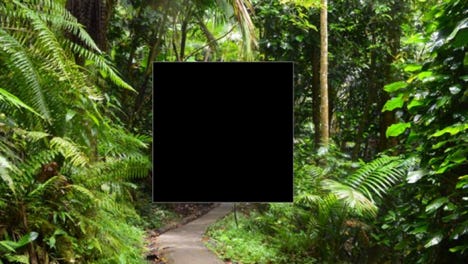
And these are the holes that random-access makes - optimizing out-of-time for computational efficiency. This violates my linear memory, placed carefully in a sequence across time and place, this abrupt re-shuffling is in direct contradiction to the way I experience my personal thread, my singular illusion of linear time.
And I guess I was grateful?
I did want to know that I’d lost my friend, but really I was just confused.
I’m still confused. I never got to say goodbye.
I deleted my Facebook account that day.
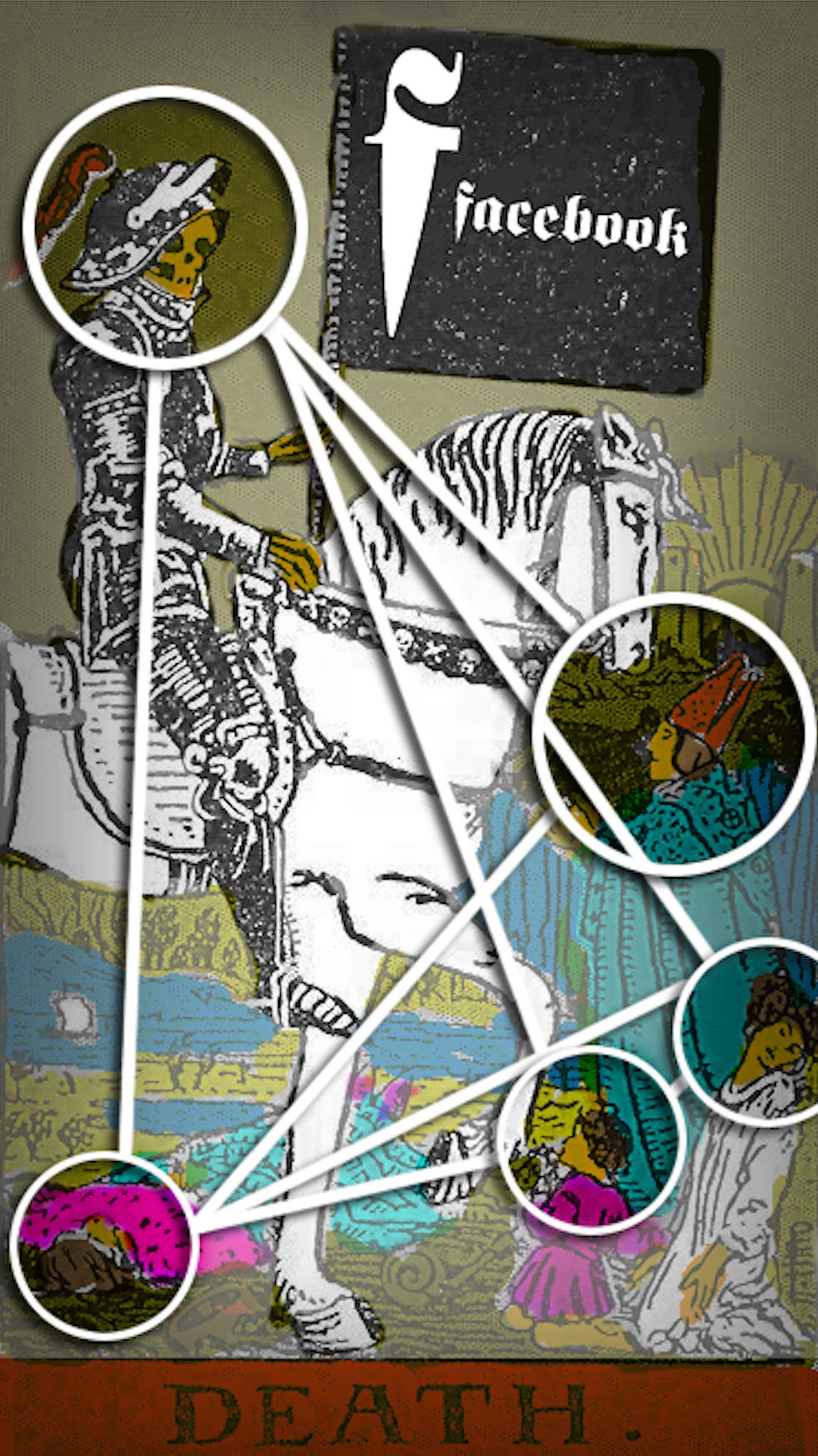
MoRM 2 : WHAT DO YOU WANT TO REMEMBER?
A year later, in the same library in Denmark, we re-create the Museum of Random Memory. This one is different, it’s an archive now. We have a website and an intake form, an actual database, and we are asking for people to contribute memories.
The performance is really the interaction with the intake department, an elaborate ritual of listening that encodes the serious playfulness of the project, but I am growing increasingly uncomfortable with the way I feel the project is collapsing towards the system I want it to critique. The database exists now, an abstract container holding a time-bomb of responsibility that isn’t abstract at all. Is it secure? Where will it go? Who owns it? How will it be used? In whose time?
My notes:
Towards an architecture of co-creation
1) Establishing a liturgy of memory collection, containment and redistribution
Goal:
- An ethically compliant community memory API to support legitimate peripheral participation
- Principle: “Yes, here’s how to do it safely.”
This last bit comes from a conversation during the first MoRM iteration, a conversation I had with a man named Kristian at Godsbanned, home of the Institute for X, a sprawling experimental concept that is part school, part commune, part farm and part whatever it is that the community thinks it ought to be at a given moment. The Institute has a shop filled with power tools, and during a tour Kristian told me that anyone who wanted could wander in and borrow a chainsaw, a table saw or any other tool. Anticipating my next question he said immediately “We never say no, we always say yes. Yes and here’s how to do what you want to do safely.”
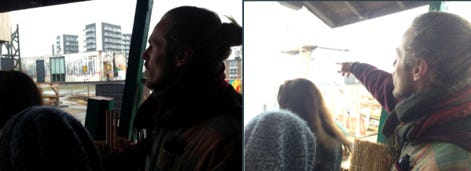
Here’s how to come out the other side alive.
Can we do this safely?
In the face of current events I’m starting to believe that we cannot, and that we’ve gone too far, and that we given up too much, and that the only thing left now is the guillotine, weaponized, social boot-stepping-on-a-human-face forever, and I have never wanted to be more wrong in my life.

Continues in part 1.5….
Did you enjoy reading this? Please share it! If you found it particularly helpful or interesting, I'd love a cup of coffee ☕ 💜
